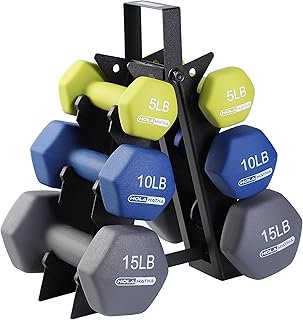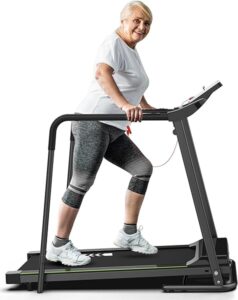Dumbbells are one of the most versatile and effective tools for strength training. Whether you’re a beginner looking to build muscle or an advanced lifter aiming to enhance your workout routine, dumbbells provide a flexible and convenient way to train. This guide will cover everything you need to know about dumbbells, including their benefits, types, exercises, and tips for choosing the right set.

BUY NOW
Benefits of Using Dumbbells
Dumbbells offer numerous advantages over other types of gym equipment, making them a popular choice for fitness enthusiasts.
1. Versatility
Dumbbells can be used for a wide range of exercises targeting different muscle groups. From upper-body workouts to lower-body and core exercises, they allow for a full-body workout without needing multiple machines.
2. Improved Muscle Activation
Compared to machines, dumbbells engage more stabilizing muscles, leading to better muscle activation and growth. Each limb works independently, helping correct muscle imbalances.
3. Greater Range of Motion
Dumbbells allow for a more natural range of motion compared to barbells and machines, reducing the risk of joint strain and injury.
4. Convenience and Space-Saving
Dumbbells are compact and easy to store, making them ideal for home gyms. Adjustable dumbbells, in particular, save space while providing a variety of weight options.
5. Safer for Solo Training
Unlike barbells, dumbbells are safer to use when training alone, as they don’t require a spotter. You can drop them safely if needed without the risk of getting stuck under a heavy barbell.
Types of Dumbbells
There are several types of dumbbells, each catering to different training styles and preferences.
1. Fixed Dumbbells
These are pre-set in weight and commonly found in gyms. They come in different materials, such as rubber-coated, metal, or neoprene.
2. Adjustable Dumbbells
Adjustable dumbbells allow users to change weights by adding or removing plates. They are ideal for home workouts as they save space and provide a range of resistance levels.
3. Selectorized Dumbbells
These are a type of adjustable dumbbell that uses a dial or pin system to change weights quickly, making them convenient for fast-paced workouts.
4. Hex Dumbbells
Hex dumbbells have six-sided heads, preventing them from rolling on the floor. They are popular for functional training and exercises that require floor stability.
5. Studio Dumbbells
Lighter in weight and often coated with neoprene or vinyl, studio dumbbells are used for group fitness classes and high-rep endurance workouts.
Best Dumbbell Exercises for Strength and Muscle Growth
Dumbbells allow for effective strength training exercises targeting different muscle groups.
1. Dumbbell Bench Press
Muscles Worked: Chest, shoulders, triceps
- Lie on a bench and hold a dumbbell in each hand.
- Lower the weights to chest level, keeping elbows at a 45-degree angle.
- Press the dumbbells back up and repeat.
2. Dumbbell Shoulder Press
Muscles Worked: Shoulders, triceps
- Sit or stand with dumbbells at shoulder height.
- Press the weights overhead until your arms are fully extended.
- Lower the dumbbells back to the starting position and repeat.
3. Dumbbell Rows
Muscles Worked: Upper back, lats, biceps
- Place one knee and hand on a bench for support.
- Pull the dumbbell towards your waist, squeezing your shoulder blade.
- Lower the weight and repeat for the other arm.
4. Dumbbell Squats
Muscles Worked: Legs, glutes, core
- Hold a dumbbell in each hand at your sides or shoulder height.
- Lower into a squat, keeping your chest up and knees aligned.
- Push back up and repeat.
5. Dumbbell Deadlifts
Muscles Worked: Hamstrings, glutes, lower back
- Hold dumbbells in front of your thighs.
- Hinge at the hips and lower the weights down your legs.
- Stand back up, engaging your glutes at the top.
6. Dumbbell Lunges
Muscles Worked: Quads, hamstrings, glutes
- Hold dumbbells at your sides.
- Step forward and lower into a lunge.
- Push back up and repeat for the other leg.
7. Dumbbell Bicep Curls
Muscles Worked: Biceps
- Hold dumbbells with palms facing forward.
- Curl the weights towards your shoulders.
- Lower the dumbbells slowly and repeat.
8. Dumbbell Tricep Extensions
Muscles Worked: Triceps
- Hold one dumbbell with both hands behind your head.
- Extend your arms to lift the dumbbell overhead.
- Lower it back and repeat.
9. Dumbbell Russian Twists
Muscles Worked: Core, obliques
- Sit on the floor with knees bent and hold a dumbbell.
- Twist your torso to one side, then the other.
- Keep your core engaged throughout.
10. Dumbbell Farmers Walk
Muscles Worked: Grip, forearms, core
- Hold a dumbbell in each hand.
- Walk forward while maintaining good posture.
- Continue for a set distance or time.
How to Choose the Right Dumbbells
Selecting the right dumbbells depends on your fitness goals and experience level.
1. Weight Selection
- Beginners: Start with 5-15 lbs (2-7 kg) per hand.
- Intermediate: Use 15-30 lbs (7-14 kg) for compound movements.
- Advanced: Go heavier based on strength levels.
2. Material and Grip
- Neoprene and rubber-coated dumbbells provide a comfortable grip.
- Metal dumbbells are more durable but can be rough on hands.
3. Fixed vs. Adjustable Dumbbells
- Fixed dumbbells are great for quick transitions and stability.
- Adjustable dumbbells are ideal for home gyms with limited space.
4. Budget and Space
- If you have a budget constraint, go for adjustable dumbbells.
- For a dedicated gym setup, a set of fixed dumbbells is a good investment.
Dumbbell Maintenance Tips
Proper maintenance can extend the lifespan of your dumbbells and keep them in top condition.
1. Clean Regularly
Wipe down dumbbells after each use to prevent sweat buildup and rusting.
2. Store Properly
Use a dumbbell rack to keep them organized and avoid damage.
3. Check for Damage
Inspect the weights for cracks or loose parts, especially for adjustable dumbbells.
4. Avoid Dropping
Dropping dumbbells can damage both the weights and the floor. Use rubber flooring for protection.
Conclusion
Dumbbells are an essential tool for anyone looking to improve strength, build muscle, or enhance overall fitness. Their versatility, ease of use, and space-saving nature make them perfect for both home and gym workouts. By incorporating dumbbell exercises into your routine and choosing the right set based on your needs, you can achieve your fitness goals effectively. Start lifting today and experience the benefits of dumbbell training!


